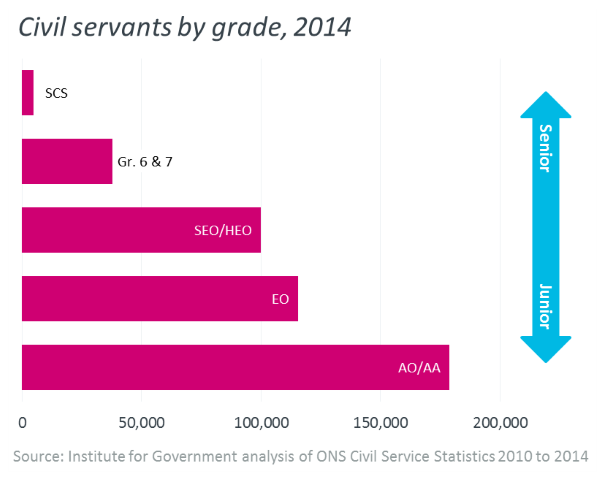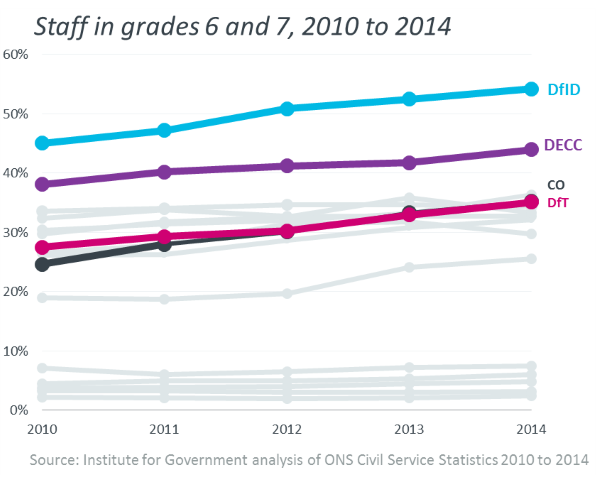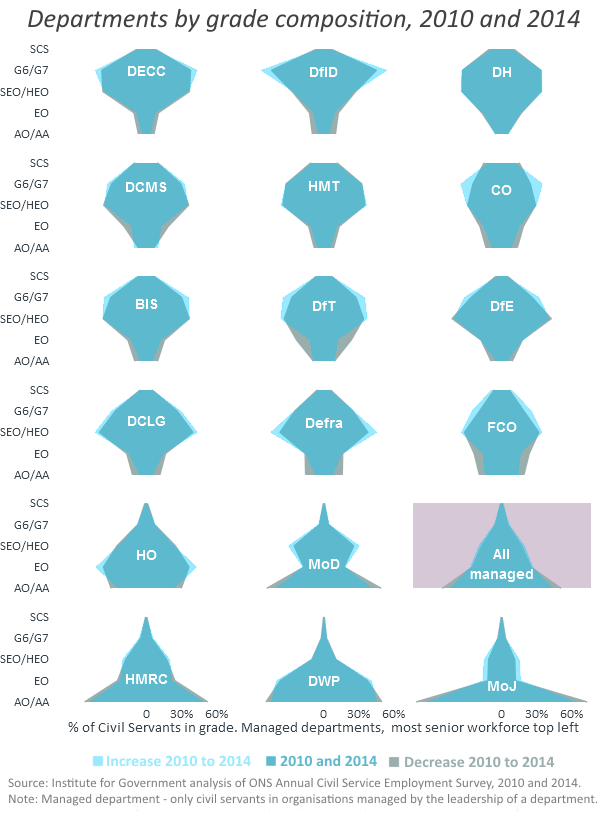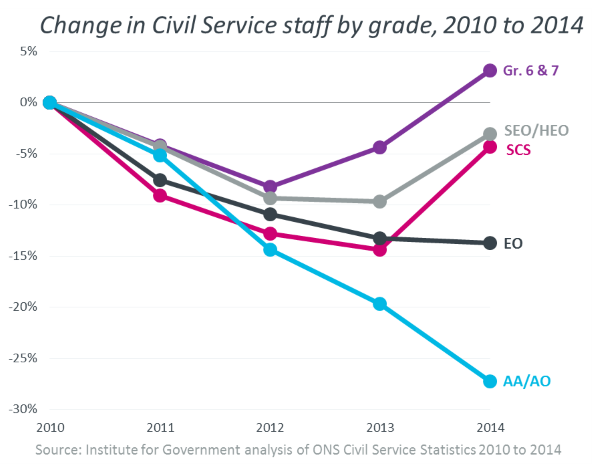The Annual Civil Service Employment Survey was published by the ONS to relatively little attention two weeks ago, but it contains a wealth of information about what the Civil Service looks like in 2014 and how it’s changed since 2010. We’ve already analysed the gender, ethnic minority, disability and age composition of the Civil Service – but what does it look like in terms of seniority and staff grades?
More recent analysis of Civil Service grades using 2015 data can be found on our blog. Four in ten civil servants work in the administrative grades. 



- Topic
- Civil service
- Keywords
- Civil servants Civil service reform
- Administration
- Cameron-Clegg coalition government
- Publisher
- Institute for Government